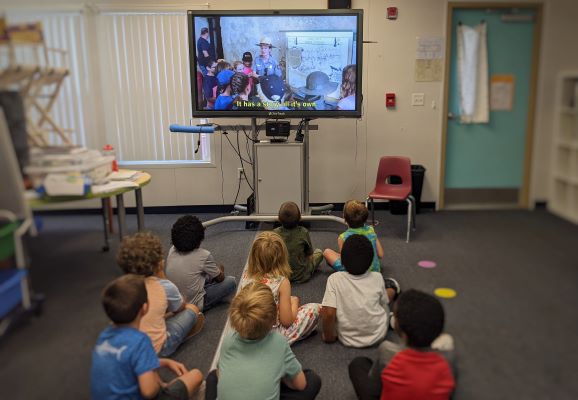Last updated: March 15, 2023
Lesson Plan
Pre and Post Field Trip Activities

- Grade Level:
- Upper Elementary: Third Grade through Fifth Grade
- Subject:
- Literacy and Language Arts,Social Studies
- Lesson Duration:
- 90 Minutes
- Common Core Standards:
- 4.L.1, 4.L.3, 4.L.4, 4.L.4.a, 3.RF.4.c, 4.RF.3, 4.RF.4, 4.RF.4.a, 4.RF.4.c, 4.RI.1, 4.RI.2, 4.RI.3, 4.RI.4, 4.RI.5, 4.RI.6, 4.RI.7, 4.RI.9, 4.SL.1, 4.SL.1.c, 4.SL.1.d, 4.SL.2, 4.SL.3, 4.SL.4, 5.SL.1
- State Standards:
- FL NGSSS
SS.3.A.1.1
SS.3.A.1.2
SS.3.C.2.1
SS.4.A.1.1
SS.4.A.1.2
SS.4.A.3.1
SS.4.A.3.2
SS.4.A.3.3
SS.4.A.3.5
SS.4.A.3.6
SS.4.A.3.7
SS.4.A.3.9
SS.4.A.3.10
SS.4.A.9.1
SS.5.A.1.1
SS.5.A.1.2
SS.5.A.3.2
SS.5A.3.3
SS.5.A.4.1
SS.5.A.6.6
SS.5.C.2.4
SS.5.C.2.5 - Thinking Skills:
- Understanding: Understand the main idea of material heard, viewed, or read. Interpret or summarize the ideas in own words. Analyzing: Break down a concept or idea into parts and show the relationships among the parts. Evaluating: Make informed judgements about the value of ideas or materials. Use standards and criteria to support opinions and views.
Essential Question
How can Castillo de San Marcos be used as a primary source to identify St. Augustine's significance?
Objective
Students will use primary and secondary sources to prepare for their field trip and use discussion questions to reflect on their experience.
Background
The Timucua were the Native Americans living in Florida before the arrival of the Europeans. Learn more about the Timucuan Ecological and Historic Preserve or Timucuan Technology. Spanish explorer Ponce de Leon arrived in Florida in 1513 and others soon followed. Pedro Menendez established the first permanent settlement in St. Augustine in 1565. The settlement's first nine earthen and wooden forts were destroyed by fire, weather, and pirates. Under direction from the Spanish government, a stone fortress was constructed to protect St. Augustine and the Atlantic trade route. The Spanish, Native Americans (Timucuan, Guale, Apalachee), free and enslaved Africans, and English prisoners built Castillo de San Marcos from 1672-1695.
Castillo de San Marcos National Monument preserves the oldest masonry fortification in the continental United States and interprets more than 450 years of history. A fort, not only of stone and mortar but of human determination and endurance, Castillo de San Marcos symbolizes cultural intersections, from Native Americans to European soldiers and settlers to enslaved and free African Americans that ultimately resulted in our uniquely diverse nation.
Preparation
Make reservations for your in-person Field Trip or contact the park to schedule live distance learning over Teams, Zoom, etc.
Lesson Hook/Preview
Play a music video created by a teacher to inspire students to learn more about St. Augustine, Castillo de San Marcos: Where History Comes to Life.
Procedure
- Explore the Virtual Field Trip to experience St. Augustine's rich history. Please plan on downloading the virtual field trip before sharing with the students. The "Download" function appears in the upper left corner once you open the link. This reduces the lag time and create a more user-friendly experience.
- Visit in-person on field trip or with live distance learning.
- Use the discussion questions to reflect on student experience, understanding of the social studies content, and application of reading and speaking skills.
Vocabulary
-
Primary source- an original or first-hand account from people who had a direct connection with it (examples: artifact, diary, photograph, autobiography, video, newspaper)
-
Secondary source- gives information about a primary source (examples: text book, biography, documentary, article or website written about the topic)
-
Artifact: an object made by a human being (examples: structures, tools, pottery, weapons, jewelry, metal objects)
Assessment Materials
Students will demonstrate comprehension and skills by answering the discussion questions included in virtual field trip.
- Why is St. Augustine significant?
- Why can the fort be considered an artifact?
- How important are primary sources, like Castillo de San Marcos, when it comes to learning about the past?
- In your opinion, does the fort symbolize human determination, conquest, conflict between nations, ingenuity, or cultural diversity? Justify your answer.
- Why do you think the fort should be preserved?
- As a citizen, what are your duties or responsibilities at the Castillo or in other national parks?
To meet additional curriculum standards, access the DBQ Essay: Effects of Spanish Rule lesson plan.
Supports for Struggling Learners
Work with your exceptional student education or special education teachers to modify the lesson to meet the specific needs of your students with different abilities.
Enrichment Activities
-
Explore the full virtual reality tour for Castillo de San Marcos National Monument that includes additional functions to explore the whole park, watch ranger videos, and use 3D models.
-
Explore full virtual reality tour for Fort Matanzas National Monument.
Related Lessons or Education Materials
-
Discover more education resources for your classroom.
-
Discover fun online activities for kids to experience with their families.
Contact Information
Email us about this lesson plan
